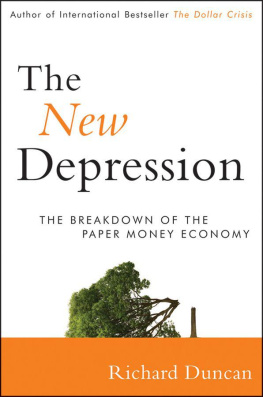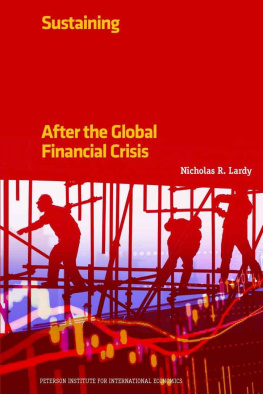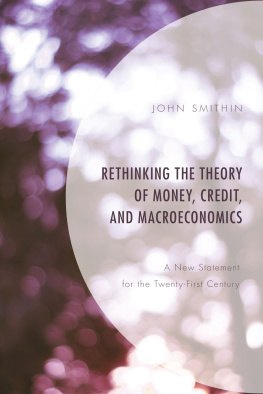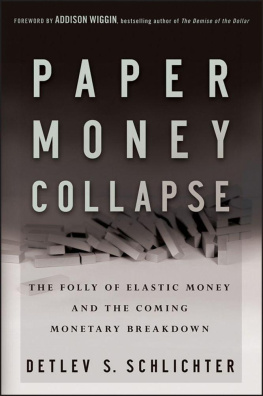Contents

Copyright 2012 Richard Duncan.
Published in 2012 by John Wiley & Sons Singapore Pte. Ltd. 1 Fusionopolis Walk, #0701, Solaris South Tower, Singapore 138628
All rights reserved.
No part of this publication may be reproduced, stored in a retrieval system, or transmitted in any form or by any means, electronic, mechanical, photocopying, recording, scanning, or otherwise, except as expressly permitted by law, without either the prior written permission of the Publisher, or authorization through payment of the appropriate photocopy fee to the Copyright Clearance Center. Requests for permission should be addressed to the Publisher, John Wiley & Sons Singapore Pte. Ltd., 1 Fusionopolis Walk, #0701, Solaris South Tower, Singapore 138628, tel: 6566438000, fax: 6566438008, e-mail: .
This publication is designed to provide accurate and authoritative information in regard to the subject matter covered. It is sold with the understanding that the Publisher is not engaged in rendering professional services. If professional advice or other expert assistance is required, the services of a competent professional person should be sought. Neither the author nor the Publisher is liable for any actions prompted or caused by the information presented in this book. Any views expressed herein are those of the author and do not represent the views of the organizations he works for.
Other Wiley Editorial Offices
John Wiley & Sons, 111 River Street, Hoboken, NJ 07030, USA
John Wiley & Sons, The Atrium, Southern Gate, Chichester, West Sussex, P019 8SQ, United Kingdom
John Wiley & Sons (Canada) Ltd., 5353 Dundas Street West, Suite 400, Toronto, Ontario, M9B 6HB, Canada
John Wiley & Sons Australia Ltd., 42 McDougall Street, Milton, Queensland 4064, Australia
Wiley-VCH, Boschstrasse 12, D-69469 Weinheim, Germany
ISBN 9781118157794 (Hardback)
ISBN 9781118157800 (ePDF)
ISBN 9781118157817 (Mobi)
ISBN 9781118157824 (ePub)
Preface
When the United States removed the gold backing from the dollar in 1968, the nature of money changed. The result was a proliferation of credit that not only transformed the size and structure of the U.S. economy but also brought about a transformation of the economic system itself. The production process ceased to be driven by saving and investment as it had been since before the Industrial Revolution. Instead, borrowing and consumption began to drive the economic dynamic. Credit creation replaced capital accumulation as the vital force in the economic system.
Credit expanded 50 times between 1964 and 2007. So long as it expanded, prosperity increased. Asset prices rose. Jobs were created. Profits soared. Then, in 2008, credit began to contract, and the economic system that was founded on and sustained by credit was hurled into crisis. It was then that the New Depression began.
There is a grave danger that the credit-based economic paradigm that has shaped the global economy for more than a generation will now collapse. The inability of the private sector to bear any additional debt strongly suggests that this paradigm has reached and exceeded its capacity to generate growth through further credit expansion. If credit contracts significantly and debt deflation takes hold, this economic system will break down in a scenario resembling the 1930s, a decade that began in economic disaster and ended in geopolitical catastrophe.
This book sets out to provide a comprehensive explanation of this crisis. It begins by explaining the developments that allowed credit in the United States to expand 50 times in less than 50 years. Chapter 1, How Credit Slipped Its Leash, looks at the domestic causes. Chapter 2, The Global Money Glut, describes the foreign causes, debunking Fed Chairman Bernankes global savings glut theory along the way. Chapter 3, Creditopia, discusses how $50 trillion of credit transformed the U.S. economy.
Chapter 4, The Quantity Theory of Credit, is introduced. This theory explains the relationship between credit and economic output. Therefore, it is an indispensible tool for understanding every aspect of this credit-induced calamity: its causes, the governments response to the crisis, and its probable evolution over the years ahead.
Chapter 5, Perpetuating the Boom, explains the governments policy response to the crisis. When seen through the framework of the quantity theory of credit, the rationale for the stimulus packages, the bank bailouts, and the multiple rounds of quantitative easing becomes obvious: the government is desperate to prevent credit from contracting.
Chapter 6, Where Are We Now?, takes stock of the current state of the economy. It looks at each sector of the U.S. economy to determine which ones, if any, can expand their debt further. Economic growth has come to depend on credit expansion. Therefore, if none of the major sectors is capable of taking on more debt, the economy cannot grow. This chapter also considers whether any of the imbalances and mistakes that led to this systemic crisis has yet been eliminated.
Chapter 7, How It Plays Out, presents scenarios of how events are most likely to evolve between the end of 2011 and the end of 2014, along with a discussion of how asset prices would be impacted under each scenario. Chapter 8, Disaster Scenarios, describes how bad things could become if the United States credit-based economic system breaks down altogether. Its purpose is to make clear just how high the stakes really are, in the beliefthe hopethat nothing focuses the mind like the hangmans noose.
Chapter 9, The Policy Options, discusses the novel and unappreciated possibilities inherent in an economic system built on credit and dependent on credit expansion for its survival. This crisis came about because the credit that has been extended was primarily wasted on consumption. Disaster may be averted if the United States now borrows to invest.
The final chapter, Fire and Ice, explains that the U.S. economy could experience high rates of inflation, severe deflation, or both as this crisis unfolds during the years ahead; and it discusses how stocks, bonds, commodities, and currencies would be affected under each scenario. In this post-capitalist age of paper money, government policy will determine the direction in which asset prices move.
The New Depression has not yet become the New Great Depression. Tragically, the odds are increasing that it will. Fiat money has a long and ignoble history of generating economic calamities. The price the United States ultimately pays for abandoning sound money may be devastatingly high, both economically and politically.
CHAPTER 1
How Credit Slipped Its Leash
Irredeemable paper money has almost invariably proved a curse to the country employing it.
Irving Fisher
Credit-induced boom and bust cycles are not new. What makes this one so extraordinary is the magnitude of the credit expansion that fed it. Throughout most of the twentieth century, two important constraints limited how much credit could be created in the United States. The legal requirement that the Federal Reserve hold gold to back the paper currency it issued was the first. The legal requirement that commercial banks hold liquidity reserves to back their deposits was the second. This chapter describes how those constraints were removed, allowing credit to expand to an extent that economists of earlier generations would have found inconceivable.
Opening Pandoras Box
In February 1968, President Lyndon Johnson asked Congress to end the requirement that dollars be backed by gold. He said:
The gold reserve requirement against Federal Reserve notes is not needed to tell us what prudent monetary policy should bethat myth was destroyed long ago.
Next page







